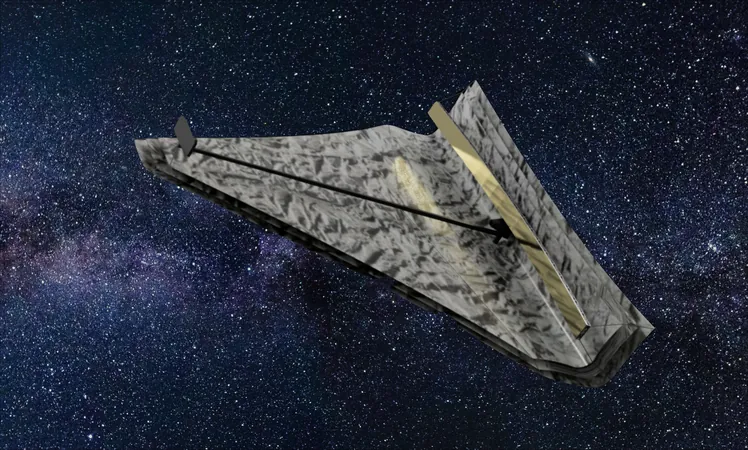
Unlocking the Universe: Can a New Telescope Shape Help Us Find 'Earth 2.0'?
2025-09-01
Author: Wei
Earth, the only known cradle of life in our vast universe, is uniquely dependent on liquid water—making it a beacon for searching extraterrestrial life. Despite the richness of single-celled organisms since Earth’s inception, it took approximately three billion years for complex, multicellular life to evolve. Yet, humans have only graced this planet for a blink in cosmic time, leading us to ponder if life is common elsewhere, but intelligent life that seeks to explore the universe may be a rarity.
The enormity of space complicates our quest; the speed of light constraints our communication and travel expeditions. Only the nearest stars might be reached within a human lifetime, and only those akin to our sun can potentially harbor life due to their stable environments.
For astronomers, the focus sharpens on about 60 sun-like stars within 30 light-years—each hosting potential Earth-like planets where land and water could thrive.
The Challenge of Discovery
Spotting a distant, Earth-like exoplanet against the blinding radiance of its star is akin to finding a needle in a cosmic haystack. Stars outshine these planets by millions of times, leading to the staggering challenge of distinguishing them.
Optics theory dictates that the resolution of telescopic images hinges on both the telescope’s size and the light's wavelength. Since planets with liquid water mostly radiate light around 10 microns—much longer than visible light—a telescope needs at least a 20-meter aperture to separate the myriads of stars from potential Earths situated 30 light-years away.
Moreover, such a telescope must venture into space, as Earth’s atmosphere would obstruct clarity. The current champion, the James Webb Space Telescope (JWST), measures only 6.5 meters, making it a significant challenge to launch a much larger telescope.
Exploring New Frontiers in Telescope Design
With today’s technology, deploying a 20-meter telescope feels more like science fiction. Researchers are exploring various alternatives, one of which proposes launching multiple smaller telescopes maintaining precise distances to mimic a larger aperture.
Another innovative route involves using shorter wavelengths, but even in this approach, the overwhelming brightness of sun-like stars prevents clear observation of planets. Plans to block starlight using a massive starshade, deployed ahead of the telescope, face hurdles too—involving exorbitant amounts of fuel for repositioning.
A Game-Changing Proposal: Rectangular Telescopes
In a breakthrough paper, a team of astrophysicists has unveiled a promising alternative design. They propose a rectangular telescope, roughly the same size as JWST but featuring a 1 by 20-meter mirror. This shape allows for effective separation of stars and their orbiting exoplanets, especially when the mirror's long axis aligns with the targets.
Remarkably, this innovative design could potentially identify half of all Earth-like planets around sun-like stars within 30 light-years in just under three years. With this knowledge, researchers might identify options for further study, especially planets with atmospheres hinting at life signs such as oxygen, a byproduct of photosynthesis.
For the top candidates, follow-up missions could be sent to capture stunning images of these distant worlds, paving the way toward identifying our cosmic counterpart, Earth 2.0.

 Brasil (PT)
Brasil (PT)
 Canada (EN)
Canada (EN)
 Chile (ES)
Chile (ES)
 Česko (CS)
Česko (CS)
 대한민국 (KO)
대한민국 (KO)
 España (ES)
España (ES)
 France (FR)
France (FR)
 Hong Kong (EN)
Hong Kong (EN)
 Italia (IT)
Italia (IT)
 日本 (JA)
日本 (JA)
 Magyarország (HU)
Magyarország (HU)
 Norge (NO)
Norge (NO)
 Polska (PL)
Polska (PL)
 Schweiz (DE)
Schweiz (DE)
 Singapore (EN)
Singapore (EN)
 Sverige (SV)
Sverige (SV)
 Suomi (FI)
Suomi (FI)
 Türkiye (TR)
Türkiye (TR)
 الإمارات العربية المتحدة (AR)
الإمارات العربية المتحدة (AR)